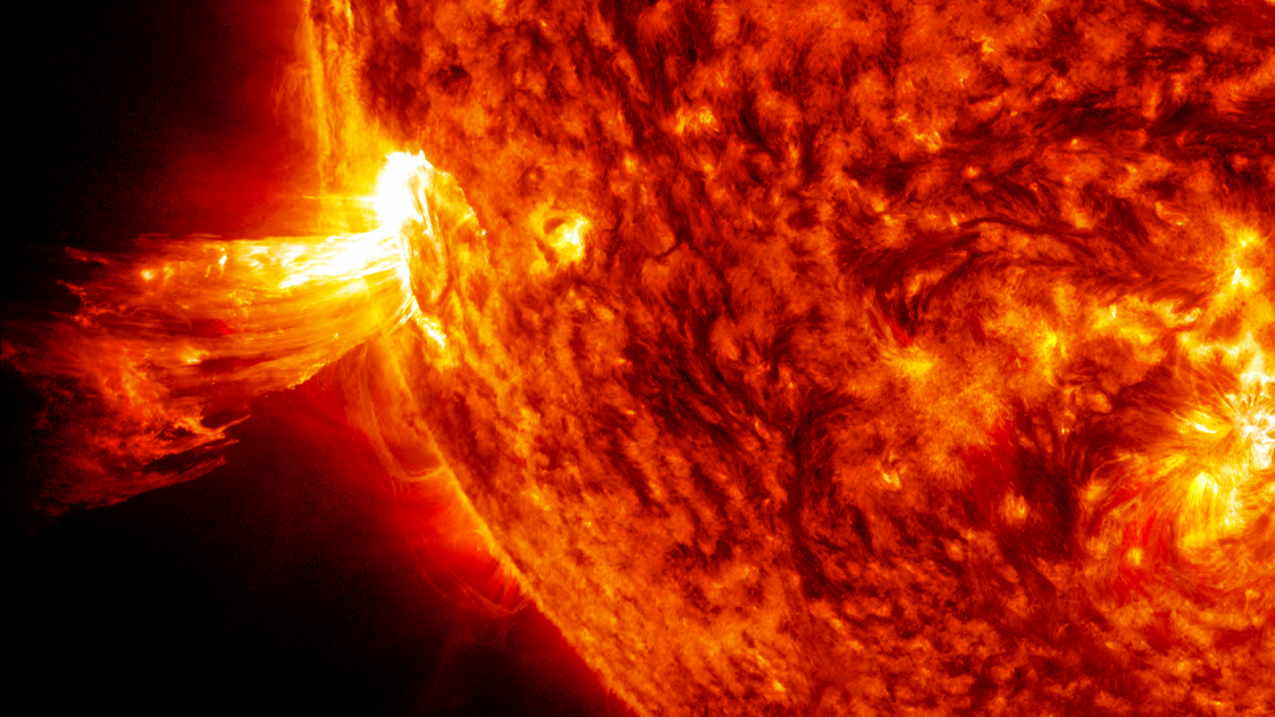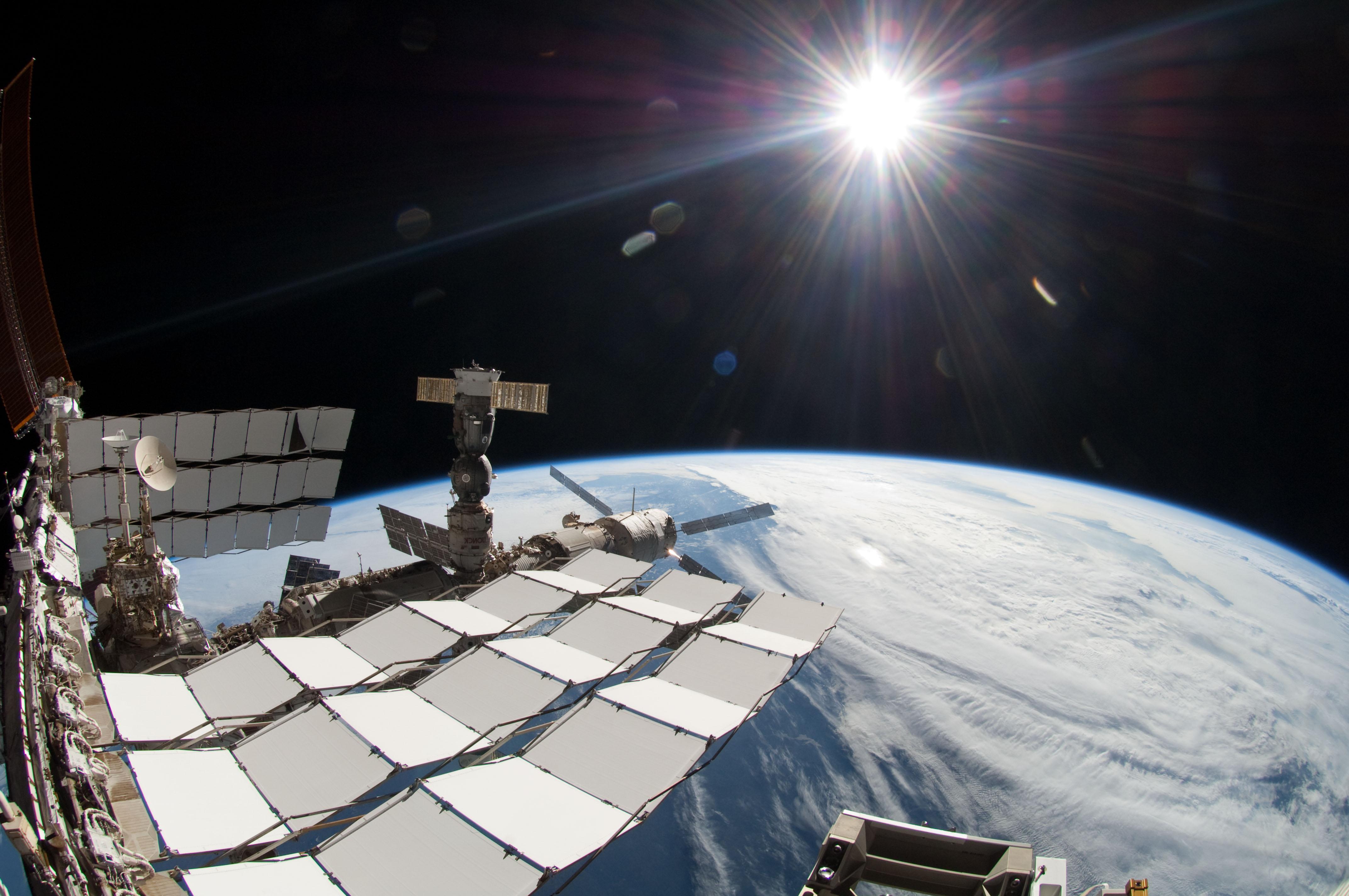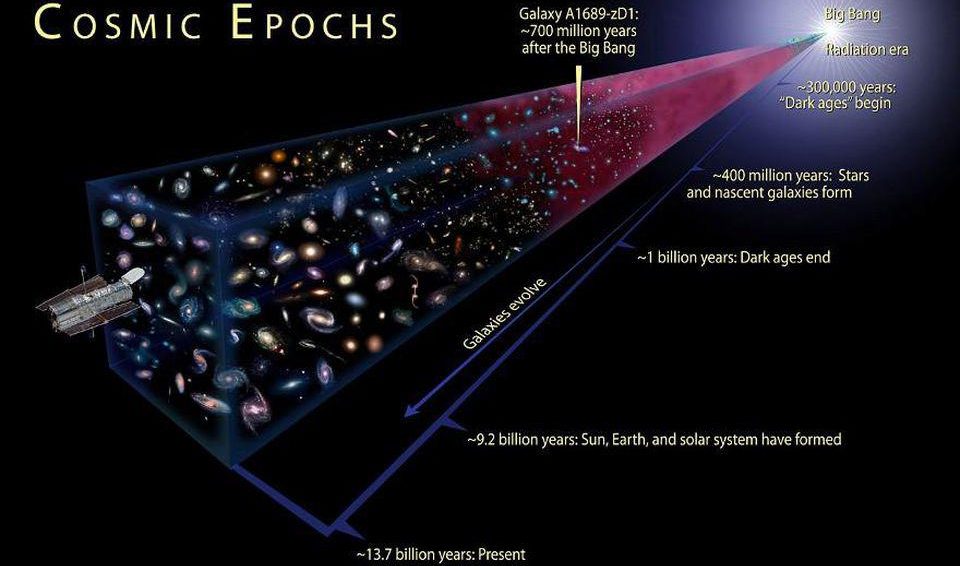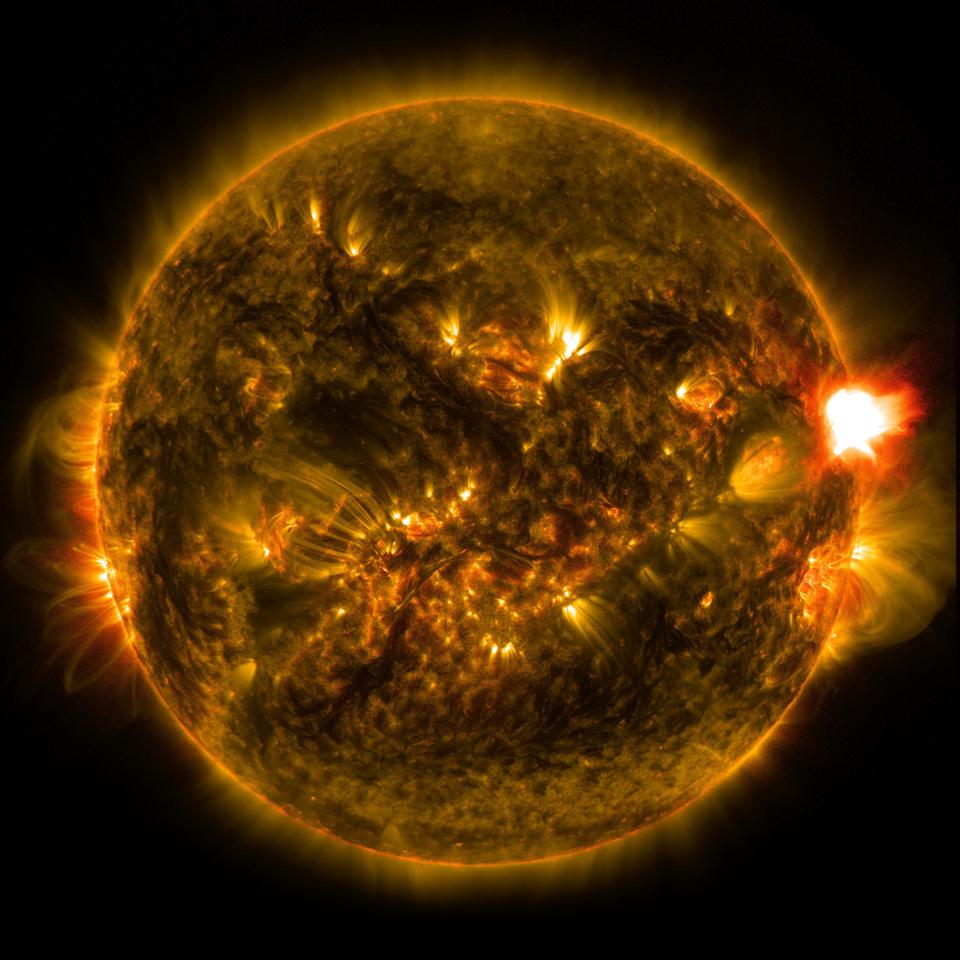The unexpected connection between the northern lights and Hubble’s death
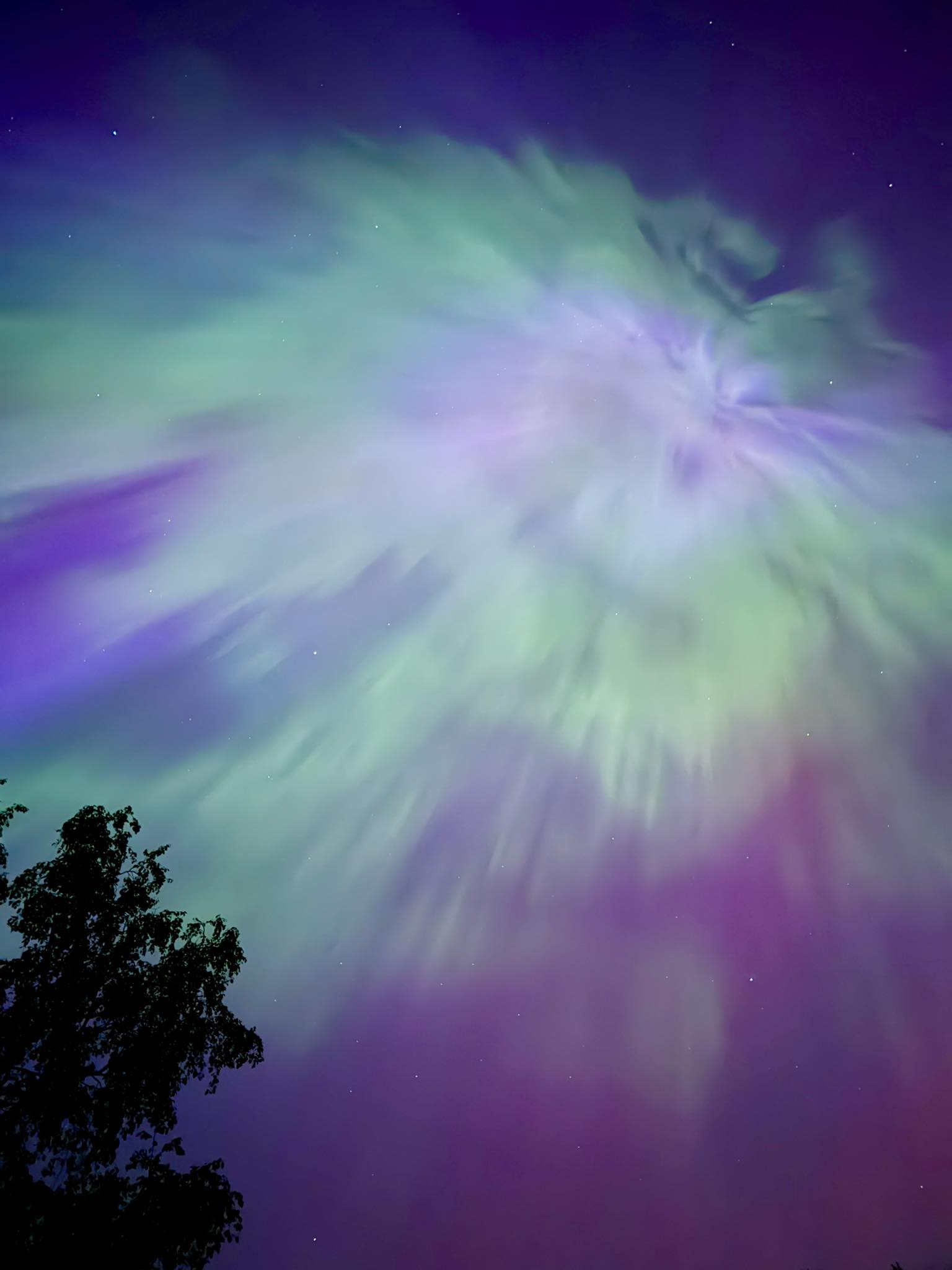
- NASA’s Hubble Space Telescope was launched in 1990 to an altitude of more than 600 km, and received boosts during each of its servicing missions, with the last one coming in 2009.
- However, that’s still within Earth’s thermosphere, and its orbit not only decays, but decays more rapidly every time the solar cycle peaks, as it’s doing right now.
- By 2026, Hubble will be below 500 km for the first time since launch, and a more active Sun will hasten its decay. May 2024’s spectacular auroral display is having a disastrous, flagship-killing side effect.
Here, in the spring of 2024, Earth’s inhabitants are getting quite a show: the greatest, most widespread, and most vibrant auroral display in more than 20 years. This is caused by an increase in solar activity:
- greater numbers of sunspots,
- larger sunspot size,
- greater numbers of more powerful solar flares,
- including those that happen to impact the Earth.
As the number of sunspots and the amount of solar activity continues to increase, with NASA continually observing powerful new flares, we have to be aware that the solar cycle hasn’t even reached its peak. With an 11-year period, previous peaks from 2003 and 2014 should be joined by the next one in 2025 or possibly even early 2026, with the potential for an even greater auroral show here on Earth.
While solar activity and space weather isn’t a direct threat to human beings or any biological organism, they do pose a threat to electronics, the power grid, and any satellites that are functioning in space. While satellites can be knocked offline and power surges and fires can occur on the ground, there’s another, subtler effect that threatens observatories like NASA’s Hubble: solar activity increases the orbital decay rate of satellites in low-Earth orbit. NASA’s Hubble, in particular, is extremely vulnerable to these peaks in the solar cycle, and is presently at a lower altitude than at any time since its 1990 launch. Here’s why, if we do nothing, the solar cycle will eventually bring about the total demise of the greatest of NASA’s great observatories: the Hubble Space Telescope.
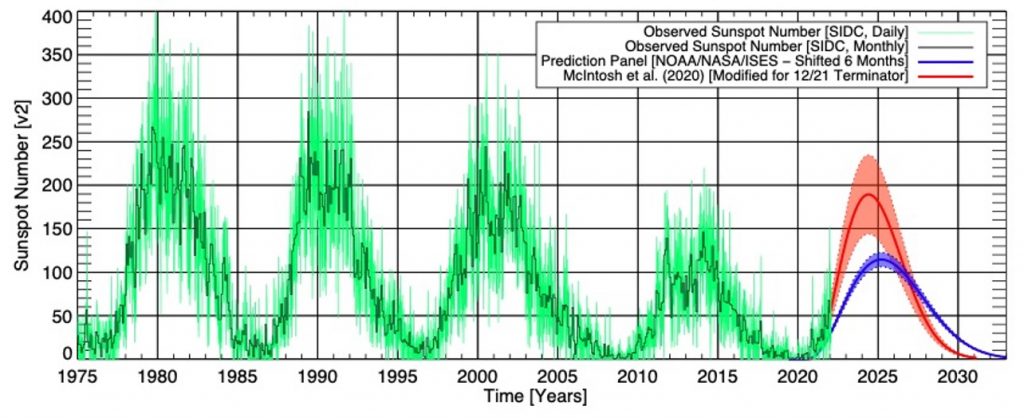
The solar cycle
If you were to look at the Sun every day during a typical month from this year, 2024, you’d count more than 100 sunspots, total, appearing across the face of the Sun during this time. The same is true if you had gone back to 2014, and the number would’ve been closer to 200 had you gone back to a typical month during 2003, as well.
But if you had instead looked at the Sun during a typical month from 2009 or 2020, you would have found between zero and five sunspots, total, during that time. There is a vast difference between a boring, inactive, practically sunspot-free Sun (which occurs near solar minimum and a feature-rich, active, heavily sunspotted Sun (which occurs near solar maximum), and they have very different implications for not only the Sun, but for Earth as well.
Every 11 years or so, the Sun completes what we know as one solar cycle: from solar minimum to solar minimum or from solar maximum to solar maximum. Recent minima occurred in 1997, 2009, and 2020, while recent maxima occurred in 1992, 2003, and 2014, with the next maximum expected in either 2025 or 2026. With greater numbers of sunspots on it, the Sun generates a greater amount of solar activity, including:
- more numerous and powerful solar flares,
- a greater chance of coronal mass ejections,
- and an enhancement of solar wind particles and other forms of space weather.

Impacts on Earth
The various forms of space weather that exist — including solar flares, coronal mass ejections, and solar wind particles — all consist of the same raw ingredients: charged particles, like protons, electrons, and heavy, ionized atomic nuclei, all emitted by the Sun and its surrounding environment. These charged particles can move at a variety of speeds, from 1-2 million km/hr all the way up to around 10 million km/hr, where the slow-moving particles take three days (or more) to travel from the Sun to the distance of Earth and where the fastest-moving ones can traverse the same distance in under 16 hours.
Most often, these particles aren’t directed anywhere near planet Earth, as space weather can be emitted by the Sun in any direction. The spectacular aurora that graced the world on the evening of May 10th, 2024 was the result of a powerful X-class solar flare that happened to be directed right at planet Earth; a couple of even more powerful flares had been emitted earlier in the same year, but didn’t happen to encounter our world.
A more active Sun, with more sunspots and that produces more frequent and more energetic space weather events, has a much greater potential for affecting the Earth in a number of ways.
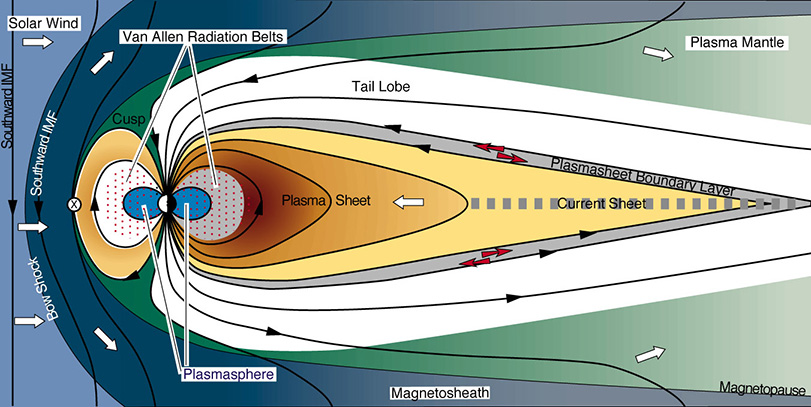
The first thing we have to consider is that Earth has an intrinsic magnetic field to it: a magnetism generated inside its convective core through the dynamo mechanism. Presently mis-aligned with our rotational axis by about 7 degrees, Earth’s magnetosphere typically points northward when we look at it from the Sun-facing direction. The charged particles emitted by the Sun — whether emitted by the solar wind, from a solar flare, or from a coronal mass ejection — will traverse the interplanetary distance from the Sun to the Earth with a speed dependent on their energy, but will also be subject to the interplanetary magnetic field between the Sun and the Earth.
If the interplanetary magnetic field also points northward (the same direction as Earth’s magnetosphere), these particles will largely be deflected away from the Earth, just like two north poles on a magnet will repel each other. However, if the interplanetary magnetic field points southward (opposite to the direction of Earth’s magnetosphere), these particles will be funneled toward the Earth, and will rain down around Earth’s magnetic poles in a circular fashion. The:
- stronger the southward interplanetary magnetic field is,
- faster the solar wind/solar flare/coronal mass ejection particles move,
- and the more successfully the interplanetary magnetic field and Earth’s magnetic field connect,
the greater of an impact these space weather events are going to have on Earth.
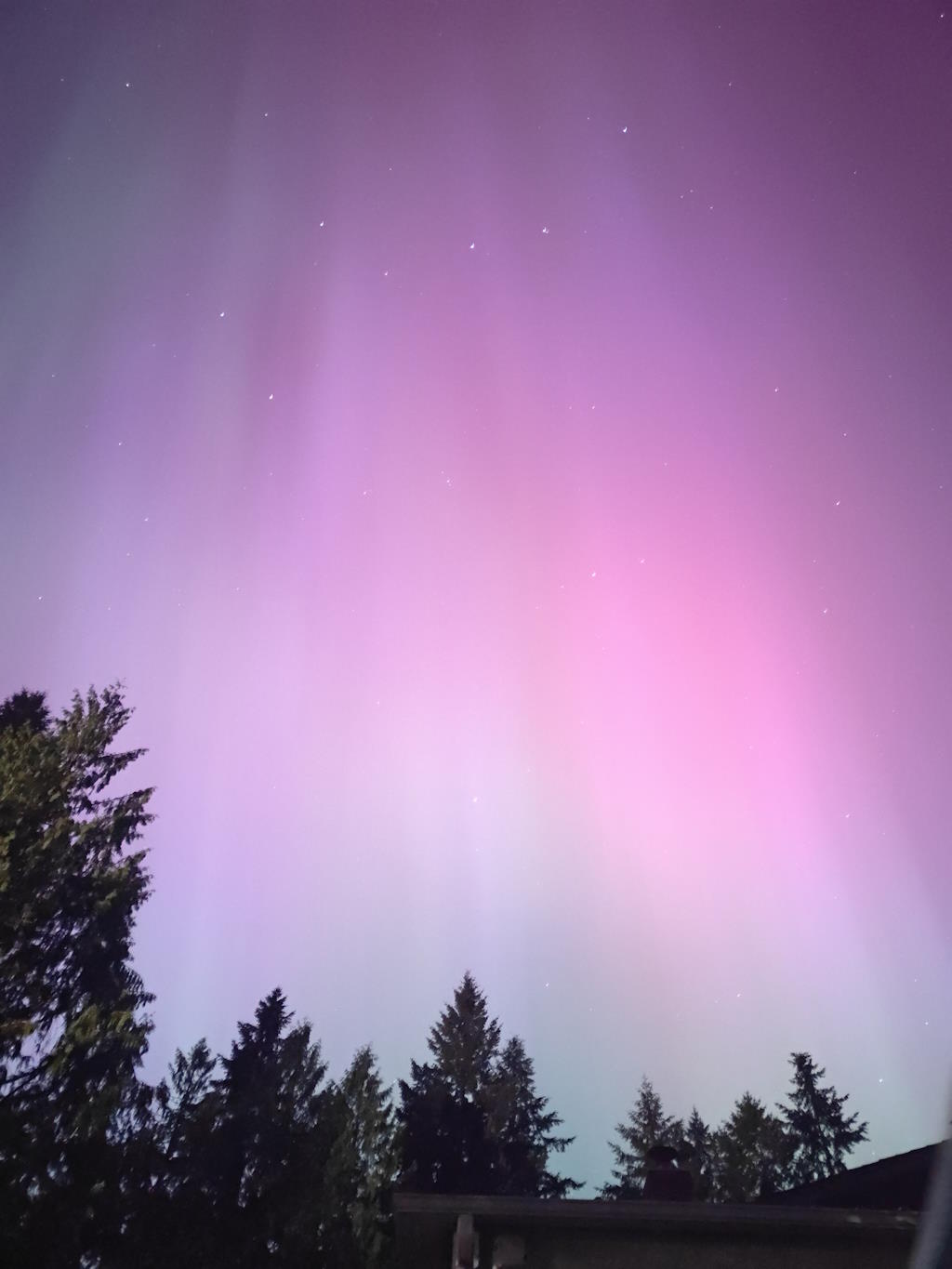
Above is a photo — taken by the author of this piece with very little astrophotography experience — of the auroral display on the night of May 10, 2024. It represents a standard 50 MP smartphone camera with the shutter left open for a long-exposure image: for four seconds. The green and red/pink lights were not visible to the naked eye, but rather appeared as a monochromatic “bright” patch of sky that appeared extra luminous above the normal sky brightness. However, photography revealed the green colors of ionized oxygen low down in Earth’s atmosphere, as well as the red/pink glow at higher altitudes: only produced by extremely energetic solar particles.
If we were experiencing a strong southern interplanetary magnetic field at the time, this could have led to a geomagnetic storm, posing a risk to power grids, electrified areas, and possibly creating enormous numbers of fires and power surges, all of which have happened before. Fortunately, that isn’t what we were experiencing, and the only effects that were noticeable on Earth were the spectacular auroral sights that accompanied these charged particles striking Earth’s atmosphere.
However, high above Earth’s atmosphere, something else occurs during periods of high solar activity: the atmosphere itself experiences an energy injection event, which increases the “puffiness” of Earth’s atmosphere, leading to higher particle densities at greater altitudes than normal.
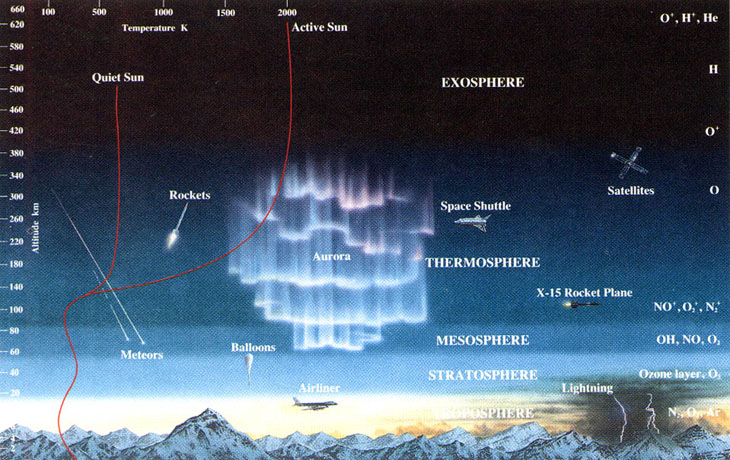
Earth’s atmosphere and satellites
We typically think of the border that separates Earth’s atmosphere from outer space as a line: the Kármán line is one example of such a definition, or the top of Earth’s thermosphere (separate from the exosphere) as another. Despite how convenient this definition may be, it obscures a greater truth: there is no border between Earth’s atmosphere and outer space. Rather, Earth’s atmosphere continues, albeit ever more tenuously, for thousands of kilometers up above our surface, with plenty of atmospheric particles even in low-Earth orbit to interact with.
This is why all low-Earth orbiting satellites have a finite lifetime: as they continuously orbit the Earth, these satellites collide with atoms and molecules from Earth’s atmosphere. Those tiny collisions, even on an atomic level, add up over time, and contribute a very slight drag force. Over time, the satellites get dragged to progressively lower-altitude orbits, which results in them experiencing a greater atmospheric drag force over time, leading to their demise in a much more rapid fashion.
During the peak of every solar cycle, when the Sun is at its most active, it effectively “energizes” Earth’s atmosphere more successfully, leading to a more rapid decay of satellites in low-Earth orbit. And there’s no low-Earth orbiting satellite that’s more valuable, both scientifically and monetarily, than NASA’s Hubble Space Telescope.
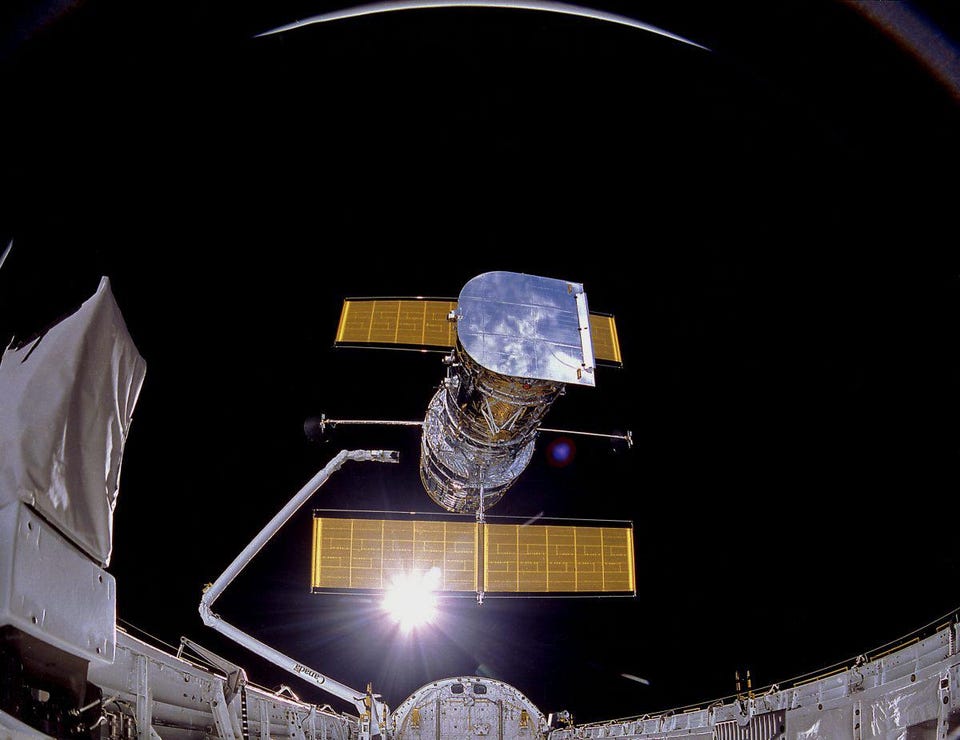
Effects on Hubble, specifically
Launched in 1990, the Hubble Space Telescope was initially deployed at an altitude of nearly 620 kilometers: relatively high in low-Earth orbit, at nearly twice the altitude of the International Space Station, for example. By the time the first servicing mission occurred, in late 1993, the orbital altitude had already decayed to 590 kilometers, with the greatest decays occurring close to the peak of the solar cycle. Beginning with this first servicing mission in 1993, astronauts helped boost Hubble back up to greater altitudes to help compensate for the effect of orbital drag.
Unfortunately, Hubble’s final servicing mission occurred way back in 2009, and its altitude from that point (at solar minimum), which was at about 570 km, has been decaying ever since. The decay of Hubble’s orbit hasn’t been steady, however, but has lost altitude irregularly: with the greatest weekly altitude losses corresponding to the greatest levels of solar activity. During solar minimum, Hubble’s altitude changes by barely 0.01 kilometers per week, as Earth’s atmosphere is most compact and interacts with orbiting satellites the least. During solar maximum, however, it can lose up to between 0.3 and 0.6 kilometers in just a single week: corresponding to cumulative changes in altitude that add up to more than 10 kilometers per year at the peak of the solar cycle.
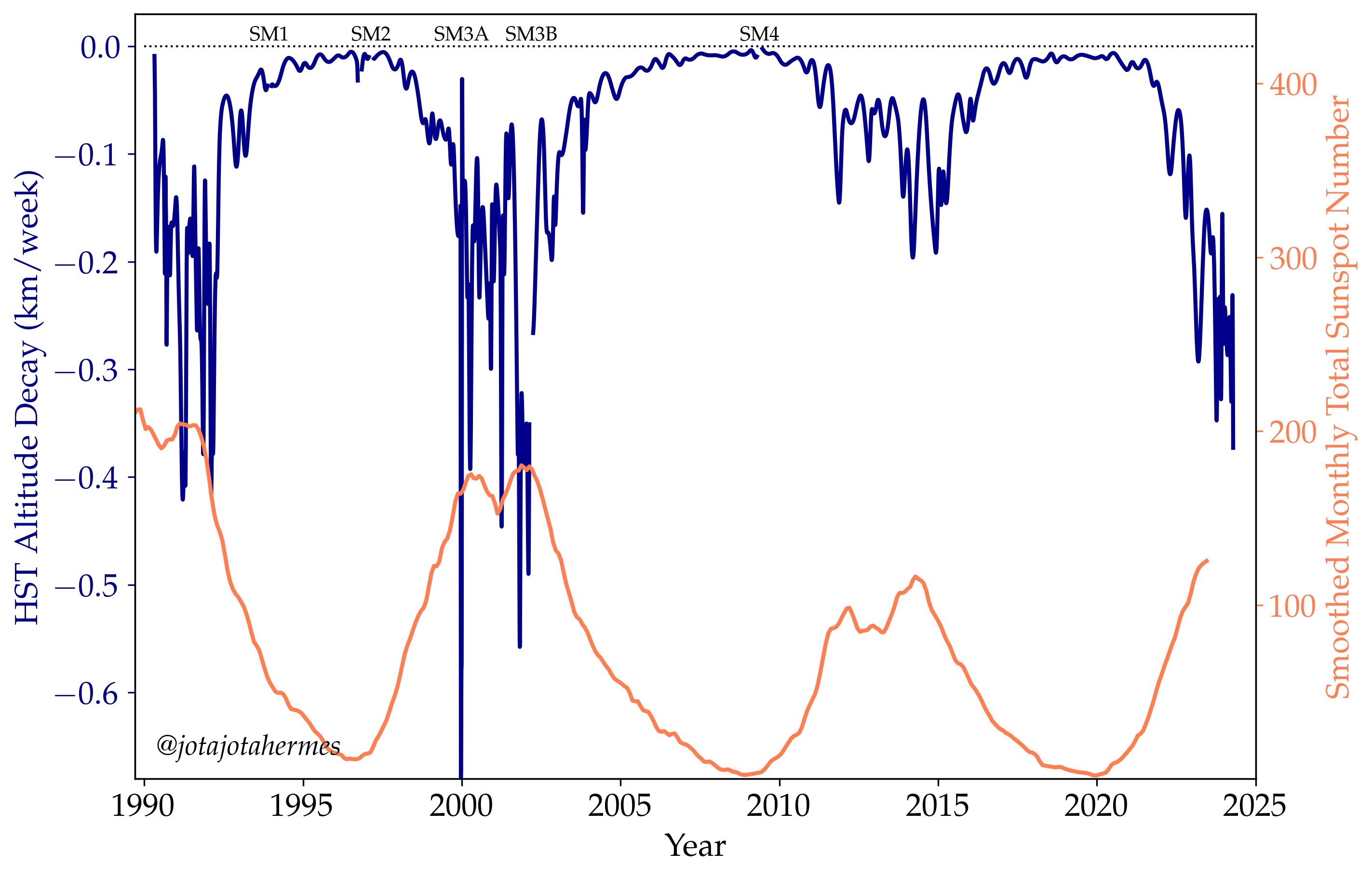
There was once a grand solar minimum at the end of the 17th and start of the 18th centuries: when the solar cycle was less active and where sunspot numbers remained low for several decades in a row. After many very active solar cycles in the 20th century, some scientists noted that:
- the 23rd solar cycle (peaking in 2003) was smaller than the 22nd,
- the 24th (peaking in 2014) was smaller than the 23rd,
and so they conjectured that we might be heading for an even smaller peak in 2025/6 with the 25th solar cycle, signaling another grand solar minimum.
This interesting idea has not panned out; the current (25th) solar cycle is significantly more powerful than the prior one was, and hasn’t even peaked yet. At present, the Hubble Space Telescope is projected to fall by more than 10 kilometers from January 1, 2024 to December 31, 2024, representing the largest orbital decay in a single year over the entire 34 year history of the Hubble Space Telescope actually being in space.
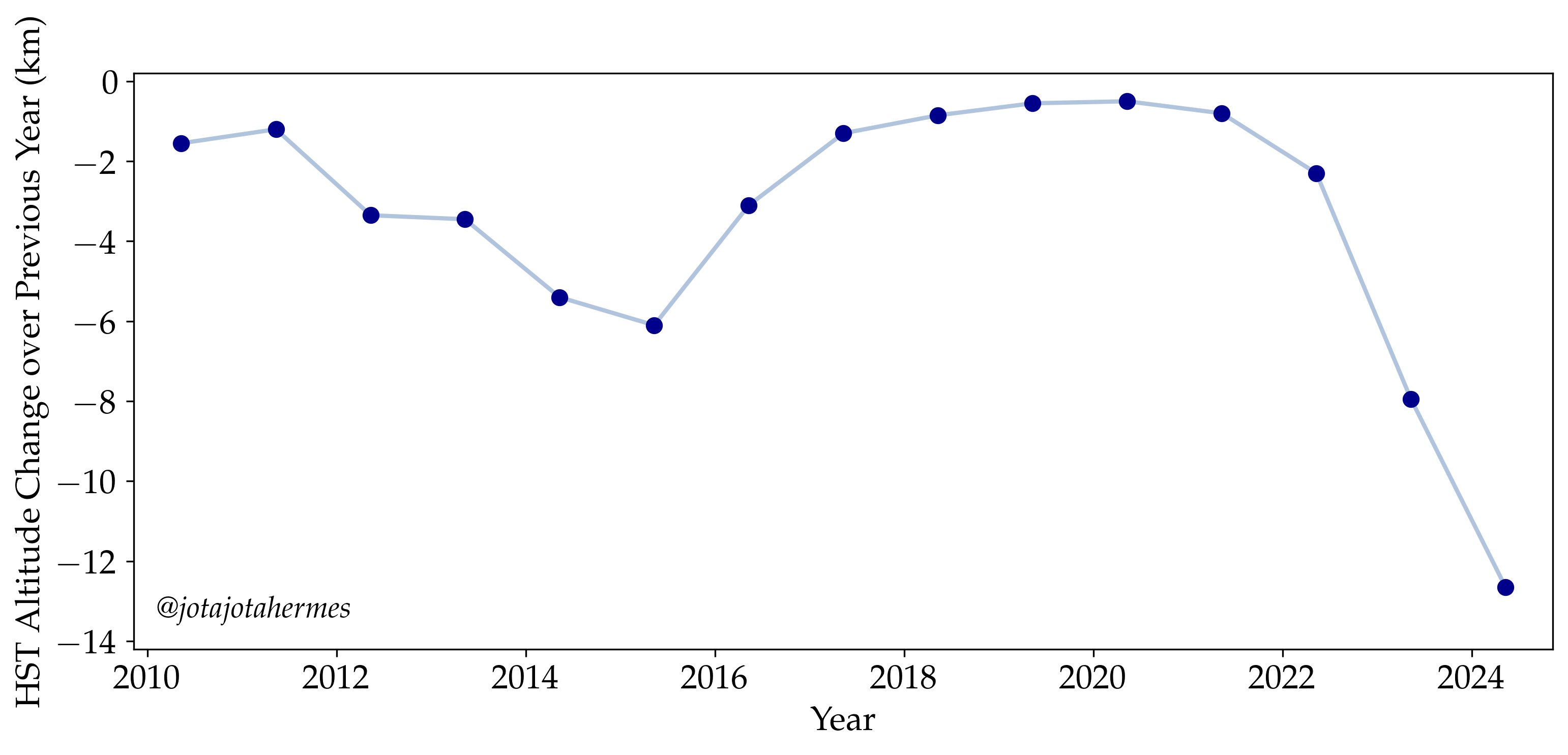
Based on how the solar cycle isn’t even expected to peak until 2025 or possibly even early 2026, we can now project a number of important milestones with an alarming degree of accuracy. As the number of sunspots continues to increase, we can anticipate that the Hubble Space Telescope will continue losing altitude, with typical altitude changes of around 300 meters lost with each week that goes by over the next few years. By the end of 2026, and possibly sooner, the Hubble Space Telescope will be below 500 kilometers in altitude for the first time.
But more importantly, this allows us to project an end-of-life for Hubble if we do nothing. At lower altitudes, the loss of altitude becomes more severe during both the quiet periods of the solar cycle as well as during the active periods, as atmospheric density increases as we go to lower altitudes. With the next peak of the upcoming (26th) solar cycle expected to occur in 2036 or 2037, we can anticipate that time period to be humanity’s last chance to save or recover the Hubble Space Telescope. Even if the next peak of the solar cycle doesn’t bring the Hubble Space Telescope all the way down, it will certainly bring it to much lower altitudes: altitudes that lead to its rapid orbital decay even during quiet solar periods.
Quite simply, it means that without further intervention, we shouldn’t expect the Hubble Space Telescope to survive to the peak of the 27th solar cycle.
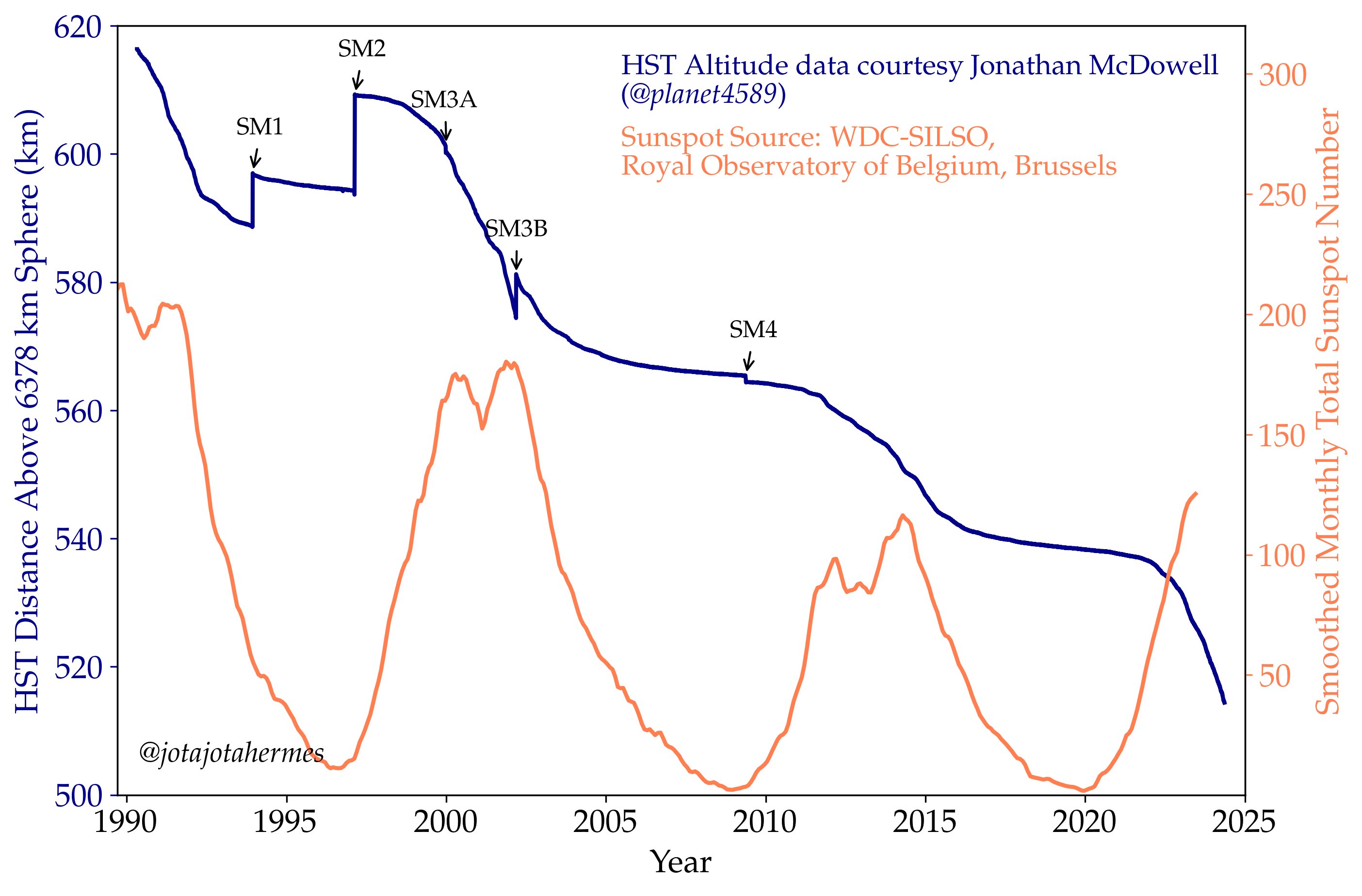
Summary
It’s not normally one of the disasters that pings our radars very strongly, but the takeaway message is this: too much space weather will put a premature end to any of our Earth-orbiting satellites, including the International Space Station and Hubble. Because space weather events are not predictable or foreseeable beyond the long-term trends of noting when solar maximum and minimum are coming, we cannot know when, precisely, these drag forces will bring our satellites, observatories, and even space stations in low-Earth orbit down.
One thing is certain, however: if we don’t boost our current satellites to higher altitudes, and we don’t do it regularly, they will have an unceremonious end-of-life brought about by uncontrolled re-entry, where space debris will pose a potential hazard to any life forms that happen to be in or near the re-entry path. This is the primary reason that NASA scientists have to consider pulling orbiting spacecraft down into Earth’s atmosphere in a controlled fashion: to prevent any possible damage from space debris from harming those of us who are down here on Earth’s surface.
Every time we see the spectacular display of an auroral show, it’s easy to get caught up in the splendor and grandeur of it all, and all too easy to forget that our energized, puffy atmosphere works to erode the orbits of the satellites revolving around our world overhead. Unless we take measures to deal with this, the premature loss of a great many satellites and observatories is an inevitability. Being informed and prepared, and acting before an emergency is upon us, is the only way to avoid catastrophe.
